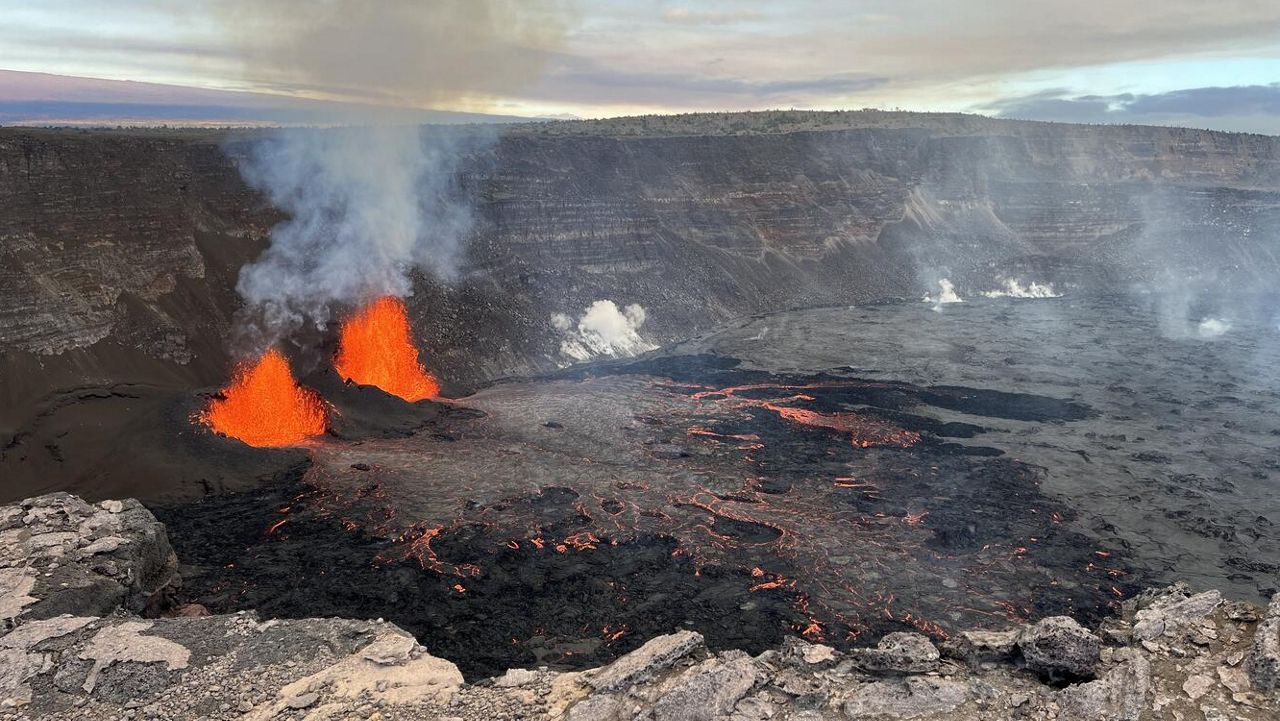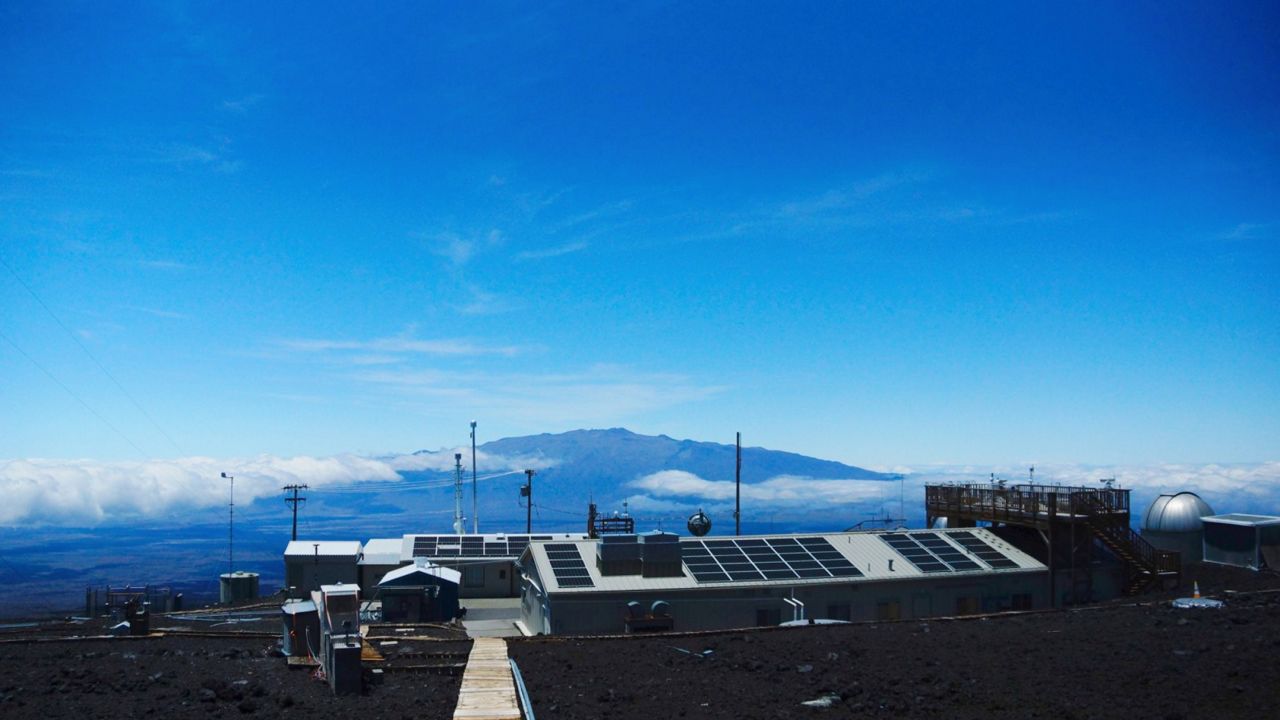Kilauea stopped erupting Saturday at 10:10 a.m. However, the Hawaiian Volcano Observatory said there is a high probability the eruption will begin again this week. The summit eruption that started on Dec. 23, 2024, was in its fourth eruptive episode.
The eruption’s activity significantly decreased Saturday around 9:45 a.m. when the north vent fountain stopped spewing lava and the south vent’s activity diminished at the same time. Lava continued to flow from the south vent for another 20 minutes at a reduced rate, finally stopping at 10:10 a.m., according to the Hawaiian Volcano Observatory.
As of Monday morning, a glow from the vents and the crater floor was still visible as breakouts and overturning crustal plates expose molten lava. According to HVO, this shows that lava remains close to the surface.
The recent eruption at the summit of Kilauea is the sixth eruption within the caldera since 2020. These eruptions have lasted for about a week to more than a year. Beginning Dec. 23, 2024, the recent eruption started, its first episode lasting a mere 14 hours. The second episode started the next day and lasted about 24 hours. The longest episode, the third one, began airing on Dec. 27, 2024, at 8 a.m. and ending on Jan. 3, 2025 at 8:40 p.m. Jan. 15, 2025 was the start date of the fourth episode.
Each of the recent eruption’s four episodes began with vigorous lava effusion and volcanic gas emissions from an initial fissure system, creating fountaining. This episodic fountaining has not been seen in any of the summit’s other eruptions, according to HVO. The onset of each fountaining episode was accompanied by a strong deflation of the summit region. With each pause, there has been an immediate change from deflation to inflation of the summit as magma fills the magma chamber.
If the current high rate of inflationary tilt continues and magma remains high in the vent as indicated by a strong glow at night, HVO said there is a high probability that a fifth fountaining episode could begin between Tuesday and Friday. If the rate of inflation slows, the estimated window of time for resumption of the eruption would be longer.
As for hazards, Pele’s hair, formed in earlier stages of the fourth episode, may continue to be moved by winds in Hawaii Volcanoes National Park and in nearby communities over the next few days. There was also a significant amount of volcanic gas emitted during the eruption.

Michelle Broder Van Dyke covers the Hawaiian Islands for Spectrum News Hawaii. Email her at michelle.brodervandyke@charter.com.






